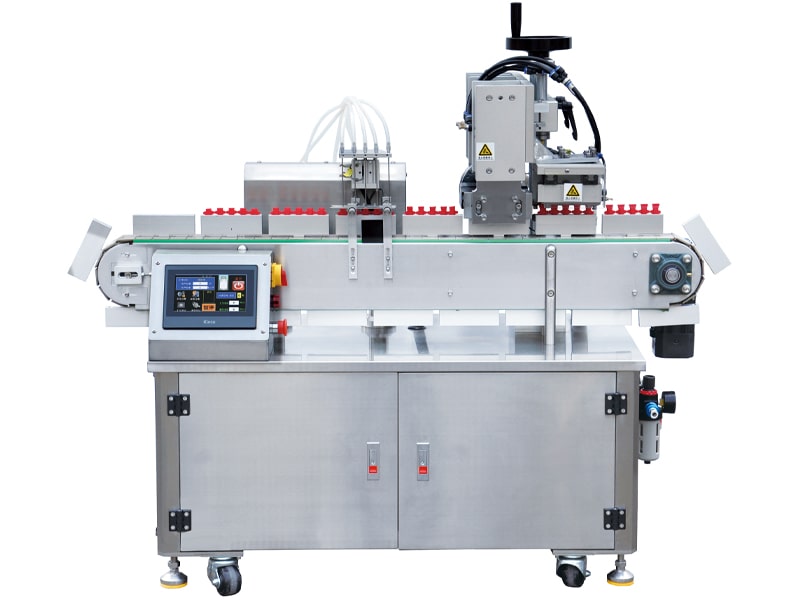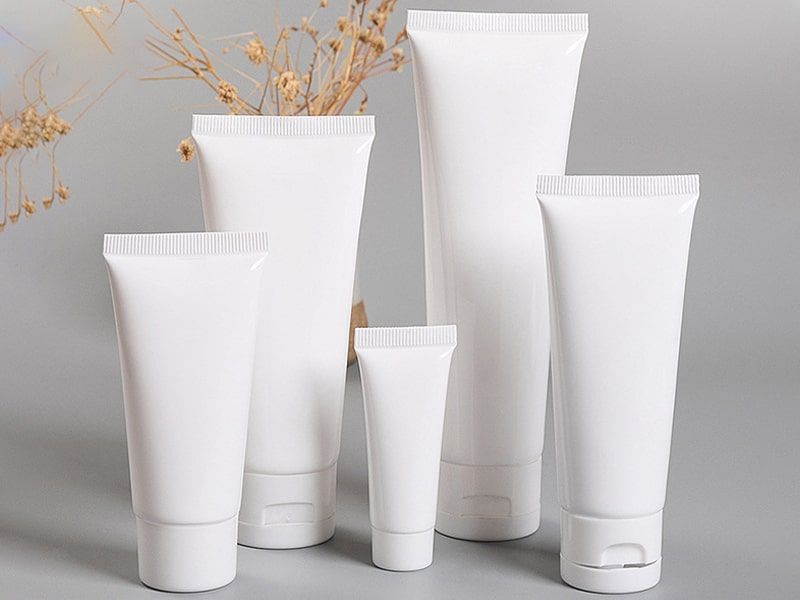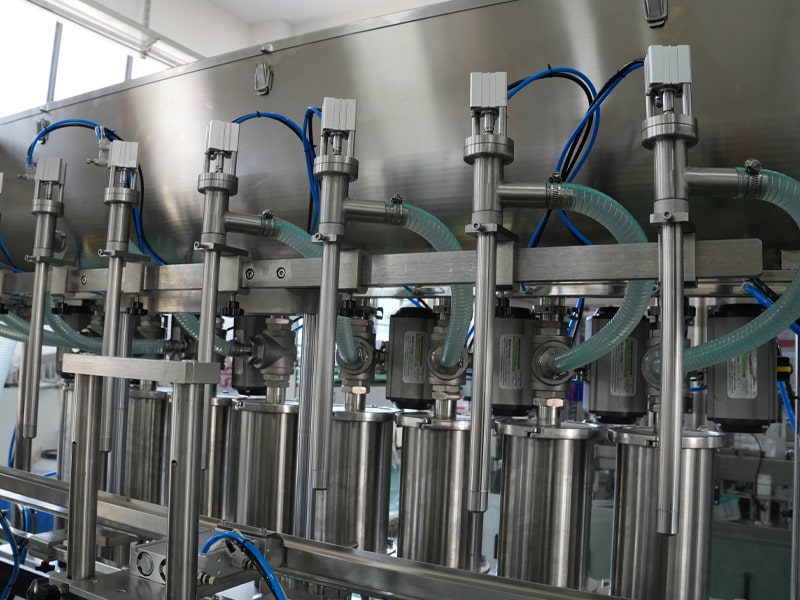Choosing the perfect tube sealing machine is a critical decision for manufacturers in cosmetics, pharmaceuticals, food, and personal care industries. The right tube sealer ensures product safety, consistency, and brand reputation by creating airtight, professional seals. A mismatched or poor-quality sealer can cause leaks, contamination, or costly production delays. In contrast, a well-chosen machine boosts efficiency, reduces waste, and ensures compliance with industry standards. This guide covers everything you need to know – from machine types and technologies to industry-specific advice – so you can select the optimal tube sealing machine for your needs.
Overview of Tube Sealing Machines and Applications
A tube sealing machine (or tube filler and sealer) is industrial equipment that fills and seals tubes made of plastic, laminate or metal. These systems may be manual, semi-automatic, or fully automatic, depending on production scale. Semi-automatic units require an operator to load tubes, while fully automatic machines handle loading, filling, sealing and even coding with minimal supervision. Tubes typically range from small cosmetic lotion tubes to large toothpaste or adhesive tubes.
Tube sealers are used across many industries. In cosmetics and personal care, they package products like creams, lotions, gels and ointments. In pharmaceuticals, they seal medicated creams, gels and ointments – requiring high accuracy and sterile seals. In the food industry, tubes carry sauces, spreads, purees and condiments, so sealers must handle viscous, food-grade products. Chemical and industrial items (e.g. adhesives, sealants, lubricants) are also packed in tubes using these machines. Modern tube sealers often integrate advanced features like PLC controls, automatic tube orientation, batch coding and even in-line conveyors (tube packing machines) for downstream processing.

There are several sealing technologies:
● Hot-Air (Plastic) Sealers: Heat air inside the tube to soften walls, then clamp to seal. This is the fastest method and works on virtually all plastic or laminate tubes. Hot-air sealers excel in high-volume production runs, but each tube diameter requires a custom nozzle (adding change-part costs). They can heat and seal large batches (often recommended for runs over \~1,000 tubes) quickly.
● Ultrasonic Sealers: Use a vibrating horn to generate heat at the tube’s end. Ultrasonic sealers require no hot-air nozzles and can even seal through product residue. They offer clean, precise seals but operate slower (\~5 tubes per minute). This makes them ideal for small to medium runs, specialty products, or tubes contaminated with product near the seal.
● Hot-Jaw (Contact) Sealers: Use heated metal jaws to crimp the tube end. These machines are simple and low-cost, but seals can be uneven and less visually appealing. They take longer to seal and often yield lower-quality appearance, so they’re best for low-budget or non-critical applications.
● High-Frequency (HF) Sealers: Primarily used for aluminum foil or aluminum-laminate tubes. These induce heat in the aluminum layer to fuse the seal. HF sealing provides strong seals for metal laminate tubes but is slower and doesn’t give the glossy finish of hot-air sealing.
● Induction Sealers: For aluminum foil liners (inside tube caps), not tube ends themselves. Induction machines use electromagnetic fields to melt foil liners inside caps.
Tube sealing machines come in standalone (sealing-only) models or integrated tube filling and sealing machines. Integrated machines fill and then seal each tube in one line, often with coding/labeling modules. Standalone sealers can be retrofitted to existing fillers if needed.
 |
| XBGF-20 Multi-head ceramic filling+ultrasonic welding and tube sealing machine |
Key Considerations When Choosing a Tube Sealing Machine
● Type of Tube Material: The sealing machine must match your tube material. Plastic (PE, PP) and laminate tubes typically use hot-air or ultrasonic sealing. Aluminum or metallic tubes require folding/crimping or induction techniques. Using the wrong method (e.g. hot-air on an aluminum tube) can ruin seals. Always verify that the sealer is specified for your tube composition and any special features (like biodegradable or multi-layer materials).
● Production Volume: How many tubes per minute or hour do you need? Machines vary widely – some semi-automatic units handle a few tubs per minute, while large automatic systems exceed 60+ tubes/min. Hot-air sealers excel at high volume (recommended for runs >1,000 tubes). Ultrasonic sealers are slower (often \~5 tubes/min) but sufficient for smaller batches. Consider whether your volumes justify a high-speed automatic filler-sealer (with costs amortized over many tubes) or a simpler semi-auto machine for lower throughput.
● Automation Level: Decide between manual, semi-automatic or fully automatic. Fully automatic machines minimize labor and errors through features like automatic tube feeding, filling by pumps or pistons, and conveyor ejection. This boosts efficiency for high-volume lines. Semi-automatic machines cost less but require operators for loading/unloading, which is fine for smaller producers. Keep in mind a fully automatic system has higher upfront cost, so analyze whether the long-term labor savings justify it.
● Budget and ROI: Higher-speed and fully automatic machines command higher prices. Beyond purchase price, factor in consumables (nozzles, molds), utilities (air, electricity) and maintenance costs. A machine with a higher initial cost may pay off with lower labor and scrap in the long run. Budget-friendly sealers like hot-jaw models are cheap, but may incur rework costs. Balance your budget against expected ROI: consider production savings, reduced waste, and product quality.
● Sealing Technology: Evaluate which sealing method best suits your needs. Hot-air sealers offer speed and versatility for most plastic/laminate tubes. Ultrasonic sealers provide precision and cleanliness, sealing through contaminants and requiring no custom tools. Hot-jaw is low-cost but lower quality. Consider noise, energy use (ultrasonic uses less energy), and desired seal appearance. For example, ultrasonic seals are thin and uniform, while hot-air can leave a visible “flash” at the seam. Match the tech to your product: heat-sensitive products or thin packaging often benefit from ultrasonic sealing.
● Integration with Filling Equipment: If you already have a tube filling system, ensure the sealer can integrate smoothly. Some machines come as a combined automatic tube filling and sealing machine, so filling and sealing happen in one line. Others require a separate conveyor system. If integrating into an existing line (for example, combining a tube filler machine with a separate sealer), check compatibility of controls and cycle timing. Integrated systems reduce handling but may limit flexibility. Plan your layout and choose equipment (or modular units) that fits into your production flow.
Comparison of Popular Types
Ultrasonic Tube Sealer
● Ultrasonic sealers use a vibrating horn to soften and weld the tube’s plastic or laminate layers. They require virtually no custom jaws or nozzles, making size changeovers quick. Ultrasonic units can even seal through product residue at the end, reducing waste. The seals are uniform and clean, ideal for high-value or sensitive products. The trade-off is speed: ultrasonic machines typically seal only a few tubes per minute (often \~5 tpm). Because of this, they are best for small to medium production runs or specialized cosmetics and pharmaceuticals where seal integrity is paramount.
Plastic Tube Sealer Machine (Hot-Air)
Hot-air plastic tube sealers are the industry workhorse for plastic and laminate tubes. A heated nozzle is inserted into the open tube mouth, blowing hot air to melt the inner walls before a cutting/sealing jaw clamps the tube. This method is extremely fast – ideal for large batches – and works on virtually any extruded plastic or laminate tube. It produces a glossy, professional finish. The main downside is tooling: each tube diameter needs a matching air nozzle and jaws, which adds to changeover parts. In practice, hot-air sealers are recommended for high-volume lines (over \~1,000 tubes per run) because the speed advantage quickly offsets the nozzle cost. For example, a single high-speed hot-air machine can often seal 30–60+ tubes per minute, greatly outperforming ultrasonic units.
Automatic Tube Filling and Sealing Machine
● An automatic tube filling and sealing machine integrates a liquid/paste filling station with an end-sealing station. Such machines are available in linear or rotary layouts. Tubes are automatically fed (often via a conveyor or indexing table), filled by measured piston or servo pumps, and then immediately sealed by hot-air or ultrasonic units. High-end automatic systems can process 30 to over 100 tubes per minute, making them suitable for mid-to-large production (typical capacities are 30–60+ tpm). They often include PLC controls and HMIs for easy changeover of fill volume, tube length, and printing/labeling functions. These machines require the biggest investment but significantly reduce labor costs and improve consistency. Many models also feature automatic tube loading/orientation and batch coding in-line. In essence, a tube filling sealing machine replaces a filler plus separate sealer conveyor, streamlining the packaging process for cosmetics, pharmaceuticals or food products.
Industry-Specific Advice
● Cosmetics and Personal Care: Cosmetic products demand attractive, uniform packaging. High-end skincare and lotions often come in uniquely shaped tubes. Tube sealers for cosmetics must produce flawless, professional seals every time. Look for machines that handle ornamental tubes (oval, flat) and have precise tube orientation so printed designs align. Cosmetic lines also benefit from multi-function machines with optional labeling/coding units (to add logos, ingredient labels, batch codes). Because cosmetic creams and gels vary in viscosity, choose a sealer/filler that can adjust fill volumes easily. In short, cosmetic manufacturers should prioritize consistent, clean seals and flexibility to handle different textures (thick creams, gels, serums). Many cosmetic tube sealers advertise “lotion tube sealer” or “cosmetic tube sealer” capability for these applications.
● Pharmaceutical: Pharma packaging demands the highest precision and cleanliness. Tube sealers in pharma must comply with GMP (Good Manufacturing Practice) standards. Choose all-stainless-steel machines (often 304 or 316 stainless) with CIP (Clean-In-Place) designs to prevent contamination. Precise dosing is critical – look for systems with servo-driven fillers or calibrated pumps to ensure each ointment tube is filled to the exact volume. Features like automatic date/lot coding and tamper-evident seals are common. Above all, the sealer must produce airtight, leak-proof seals; pharmaceutical machines often include end-of-line inspection or reject stations. Additionally, ensure the equipment has necessary certifications (CE, ISO, etc.), and that parts touching the product (nozzles, jaws) are FDA/food-grade compatible. For sensitive formulas, ultrasonic sealing can avoid exposing product to excess heat.
● Food Industry: Foods like sauces, mayonnaises, or pastes often use laminated plastic or even aluminum tubes. Machines for food-grade products must be easy to clean and meet hygiene standards. Stainless construction and quick-disassembly features are important. Hot-air sealing is widely used for food tubes because it creates a strong hermetic seal in high volumes. Ultrasonic sealing is also used for heat-sensitive or high-fat products, as it can seal without heating the entire tube surface. Tubes for food may require special handling (e.g. a cooling ring to avoid overheating viscous sauce in the seal). Many food processors also use integrated hot-fill lines where tubes are filled with sterilized product and immediately sealed. Confirm the machine is rated for food-safe usage. Key words to look for include “food tube sealer” or compliance with food safety standards (FDA, HACCP).
● Other Industries: Adhesives, lubricants and industrial chemicals often come in plastic or metal tubes. Many of the same principles apply – the sealer must match tube type. For oil-based or solvent products, ultrasonic sealing’s cleanliness may be advantageous. Specialty applications (e.g. metal solder or specialty aluminum tubes) might require custom folding heads or induction sealers. Also consider whether downstream processes like tube packing machines (which collate tubes into cartons) are needed; ensure the sealer’s output fits your packaging line.

Common Mistakes to Avoid
1. Mismatching Tube and Sealer: Never use a sealing method unsuited for the tube material. For example, don’t apply a hot-air nozzle to an aluminum tube – use a folding or ultrasonic sealer instead. Always verify material compatibility and adjust pressure/temperature settings for your specific tube.
2. Skipping Maintenance: Neglecting routine cleaning and calibration leads to poor seals and machine breakdowns. Clean sealing jaws/nozzles after each run, lubricate moving parts per manufacturer instructions, and replace worn jaws or filters. A well-maintained sealer runs longer and more reliably.
3. Insufficient Operator Training: Even the best machine requires skilled operators. Inadequate training can result in misfeeds, jams, or incorrect settings. Train staff on proper setup (tube loading, fill calibration, sealing parameters) and troubleshooting. Regular refresher sessions can help maintain consistency.
4. Poor Quality Control: Failing to inspect seals often leads to customer complaints. Always check a few tubes from each batch for complete seals (no leaks or “weak ears”). Instruments like peel testers or dye penetration checks can verify seal integrity. Ignoring small seal defects can waste product and damage brand trust.
5. Ignoring Safety: Tube sealers have moving, hot and high-voltage parts. Never bypass guards or safety interlocks. Operators should use PPE (gloves, etc.) when handling hot or moving components. Regularly inspect emergency stops and electrical safety systems.
Avoid these pitfalls to maximize uptime and product quality. Working with tubes of consistent quality (from reputable suppliers) and carefully following the manufacturer’s guidelines will also prevent many issues.
FAQs: Common Buyer Questions
● What is the difference between ultrasonic and hot-air tube sealing?
Ultrasonic sealing uses high-frequency vibrations to melt the tube at a molecular level. It creates a narrow, precise seal, uses less energy, and can seal through residual product. Hot-air sealing blows heated air inside the tube to soften the walls. It’s very fast and works with all plastics, but requires pre-heating nozzles and custom parts per tube size. In practice, ultrasonic is slower but often cleaner, while hot-air handles high volumes more efficiently.
● How fast can tube sealing machines run?
It varies by type. Hot-air sealing machines can reach dozens of tubes per minute in a high-speed setup. For example, many automatic filler-sealers process 30–60+ tpm. Ultrasonic bench-top sealers typically handle around 3–8 tpm. Throughput also depends on tube length and fill operation. Always check the specified output of any model, and remember real-world speed may be lower once loading and coding are considered.
● Can one machine handle different tube materials or sizes?
Many modern machines are designed for flexibility. Hot-air sealers can usually handle most plastic/laminate tubes, but each diameter needs a matching nozzle and clamp. Ultrasonic sealers are more “universal” since they often require no change parts – they can seal various plastics and laminates without swapping tools. Metal or aluminum tubes generally need specialized folding/crimping stations or HF/induction sealers. Most machines allow quick changeover between sizes if they have modular tube holders.
● Is it better to get an integrated filling and sealing machine?
An integrated automatic tube filling and sealing machine can improve efficiency by automating both operations in one line. This reduces manual handling and ensures better synchronization. If you have high volume or want minimal labor, an all-in-one system is ideal. However, standalone filling and sealing machines offer flexibility to expand or replace parts separately. If you already have a tube filler, ensure any new sealer can be easily added to your line.
● What maintenance is required?
Regular maintenance includes cleaning all product-contact parts, checking and replacing worn nozzles or jaws, calibrating fill volumes and temperatures, and lubricating mechanical components. Manufacturers usually provide a maintenance schedule. For example, sealing jaws should be cleaned daily, and oil or dry lubricant applied to moving slides as needed. Also inspect safety guards and electrical connections. Proper maintenance keeps seals strong and avoids downtime.
● How do I ensure regulatory compliance (e.g. GMP)?
Choose machines built with compliance in mind. Look for sanitary design (easy-to-clean surfaces, no crevices), material certifications (food-grade stainless steel for contact parts), and manufacturer documentation like CE/TUV/ISO certificates. Features such as automated cleaning (CIP) and documented batch coding also help meet industry regulations.
Conclusion and Final Tips
Selecting the right tube sealing machine requires matching the equipment to your products, production scale, and industry standards. Review all factors – tube material, throughput needs, automation level, budget and sealing technology – before investing. A well-chosen tube sealer will enhance product quality, boost efficiency and minimize waste. Always request a demonstration or sample run if possible, and work with reputable suppliers who offer good support and spare parts availability. By combining careful planning with proven technology, you’ll achieve reliable, professional seals for your tubes and maximize your return on investment.
| References: | |
| 1. | Tube Filling Machine Global Market Report 2025 ——Retrieved from:TheBusinessResearchCompany |
| 2. | Global Tube Filling Machines Market Size To Worth USD 2.34 Billion by 2033 | CAGR of 6.05% ——Retrieved from:SphericalInsights |
| 3. | Plastic Tube Sealing Equipment Market——Retrieved from:DataIntelo |






Comments